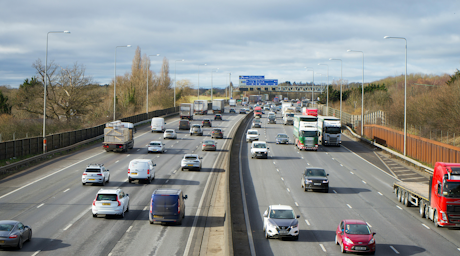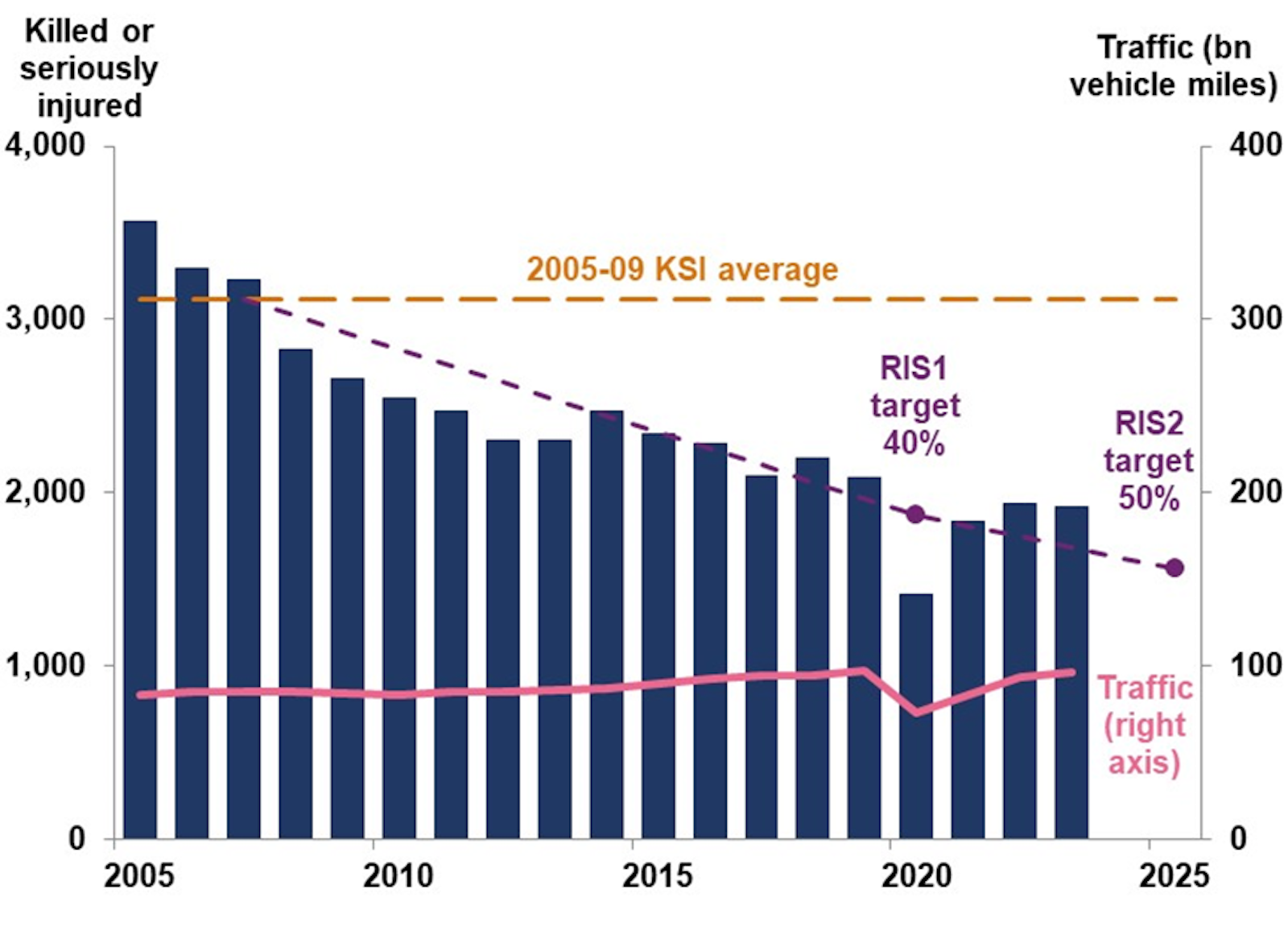
Smart Motorway Safety Concerns Intensify as Calls for Hard Shoulder Return Grow
Smart motorways are facing increased scrutiny over safety concerns, leading to growing pressure to reinstate hard shoulders on UK motorways. Recent data from the Office of Rail and Road (ORR) shows that while overall road safety has improved, National Highways is unlikely to meet its 2025 target of halving fatalities and serious injuries.
Despite a 2.2% traffic increase from 2022 to 2023, deaths and serious injuries remain at historic lows. However, significant safety concerns persist, particularly regarding smart motorways' removal of hard shoulders for additional traffic lanes during peak hours.

Multiple lane UK motorway
Key Safety Concerns:
- Technology reliability issues, especially with Stopped Vehicle Detection (SVD) systems
- Insufficient emergency stopping areas
- A critical system outage on the M62 lasting nearly a month
- Higher accident rates on some converted M1 sections
- One-third of radar detection systems failing to meet required standards

Traffic KSI trends bar graph
The AA's president, Edmund King, emphasizes that public confidence in smart motorways has decreased, with a third of drivers feeling less safe compared to three years ago. The AA strongly advocates for reinstating hard shoulders.
National Highways defends its progress, citing:
- Installation of over 700 emergency signs
- SVD systems on all all-lane running motorways
- Completion of actions from the 2020 Smart Motorway Evidence Stocktake
While National Highways has met government targets from 2020, the ORR recommends improved data collection on technology failures. The ongoing debate highlights the challenge of balancing innovation with safety on UK roads, with mounting pressure for the government to reconsider its smart motorway strategy.
